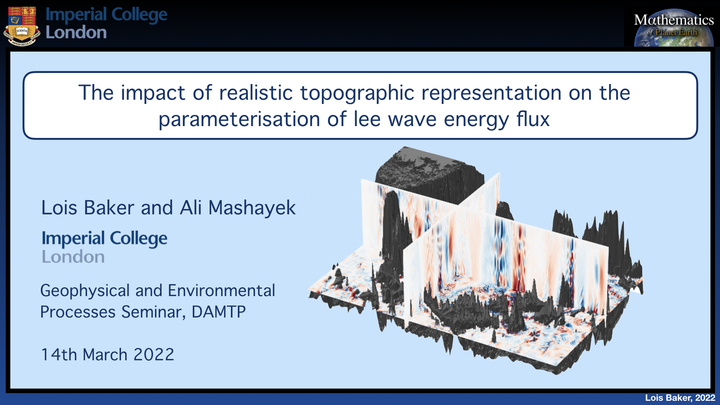The impact of realistic topographic representation on the parameterisation of lee wave energy flux

Abstract
Oceanic lee waves are generated when quasi-steady flows interact with rough topography at the bottom of the ocean, providing an important sink of energy and momentum from the mean flow and a source of turbulent kinetic energy. Linear theory with a spectral representation of topography is typically used to parameterise lee wave generation. Here, we use a realistic wave resolving simulation of the Drake Passage, a hot-spot of lee wave generation, to investigate the utility of such parameterisations for areas of complex large scale topography. The flow is often blocked and split by large amplitude topographic features, creating an `effective topography’ and calling into question the spectral representation of small scale topography for lee wave generation. By comparing the resolved modelled wave field to linear parameterisations of wave generation employing various representations of topography, we show that spectral methods may not be appropriate in such a setting. We develop a simple topographic representation consisting of an ensemble of topographic peaks, which allows physical treatment of flow blocking at finite amplitude topography. This method allows better prediction of bottom vertical velocities and lee wave energy flux than spectral methods, and implies that the nature of lee waves in such regions can be misrepresented by a spectral approach to topographic representation. This leads to both an overestimate of wave energy flux and an underestimate of wave nonlinearity, with implications for the mechanisms by which lee waves break and mix in the abyssal ocean.